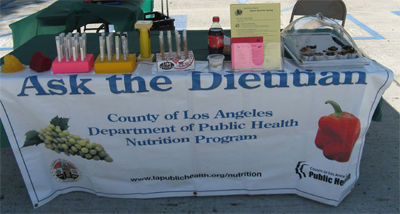ADD and ADHD are brain disorders that occur when the connections between nerve cells that regulate attention are defective. If you or your child has been diagnosed with ADD or ADHD, you may be interested in managing symptoms or effect of the medication with diet. Diet probably won't be an effective treatment on it's own, but some foods may affect symptoms and mood for some people.
Food and Mood
ADHD is a "Reward Deficiency Syndrome" meaning that those who suffer from the condition have fewer of the dopamine receptors that cause well-being and stress reduction than average. This leads to a chronic lack of well-being and increased perception of stress for those with ADHD. To correct the deficiency, people with ADHD may be prone to extreme behaviors that increase dopamine such as addictive behaviors, compulsive levels of sex, gambling, exercise, eating, shopping, shoplifting, and computer game paying.
Various macro-nutrients and micro-nutrients have an effect on mood. Eating a balanced healthy diet and making sure you don't go too long without eating can help regulate mood.
(insert table here)
Scientific research on ADD/ADHD diets is limited and results are mixed. However, whatever is good for the brain i likely good for ADD/ADHD. Eating a balanced diet with regular meals and snack can help regulate mood Ensuring adequate protein can improve concentration and possibly increase the time ADD/ADHD medications work. Choosing complex rather than simple carbohydrates such as vegetables and fruits vs. candy, honey, sugar, white rice may also help manage hyperactivity. Some studies suggest that consuming the recommended amount of omega-3 fatty acids as apart of a balanced diet can alleviate symptoms.
Also worth noting....hunger can cause decreased concentration and performance, especially in persons with ADD/ADHD. Unfortunately, their medications often case a loss of appetite, making good nutrition difficult for people with ADD/ADHD
Suggestions for increasing calories for low appetite:
- Use plenty of oil and butter when cooking
- Serve large portions
- Eat foods with low volume for calories like granola, peanut butter, dried fruit, trail mix, smoothies, bagels, banana chips, muffins, etc.
The Feingold Elimination Diet
Friends or health professionals may have told you about the Feingold Elimination Diet as a treatment for the symptoms of ADD/ADHD. The Feingold Diet involves eliminating goods and drugs containing synthetic colors and flavors, antioxidant preservatives, aspirin, and natural salicylates (these include almonds, apples, and foods containing apples, apricots, berries, cherries, cloves, coffee, cucumber, currants, grapes, nectarines, oranges, pears, peppers, plums, tangerines, tea, tomatoes, oil or wintergreen). The diet suggests reintroducing foods containing natural salicylates one by one to see if particular foods are triggering symptoms. There is limited research on the effectiveness of the diet.
10 Tips for Living with ADD/ADHD
- Take 100% multi-vitamin everyday. Studies have reported that they help people with learning and help prevent chronic illness
- Moderate Caffeine from your diet. It interferes with treatment, medications, and sleep
- Get 30-45 minutes per day of intense aerobic exercise. Make sure kids have safe exercise outlets and war helmets when appropriate. When nothing else is available, go for long, fast walks.
- Turn off the television and video games, or limit them to no more than 30 minutes a day. This may be hard for kids and teens, but it can make a huge difference.
- Food is a drug. Most people with ADHD do better with a diet high in protein and low in simple carbohydrates
- Do no yell at people with ADHD. Many people with ADHD seek out conflict or excitement because they like the stimulation it brings them. They can be masters at making other people mad or angry. Do no lose your temper with them; if they are able to get this reactions out of you, their subconscious, low energy prefrontal cortex lights up and makes them feel great. Never let your anger be their medication -- they can get addicted to it.
- Test ADHD kids and adults for learning disabilities. They can occur in up to 60% of people with ADHD. The local schools are often set up to do this for school-aged children.
- Apply for appropriate school or work accommodations
- Take a high quality fish oil supplement. Adults: 2000-4000mg/day. Children 1000-2000mg/day.
- Never stop seeking the best help for your brain.












